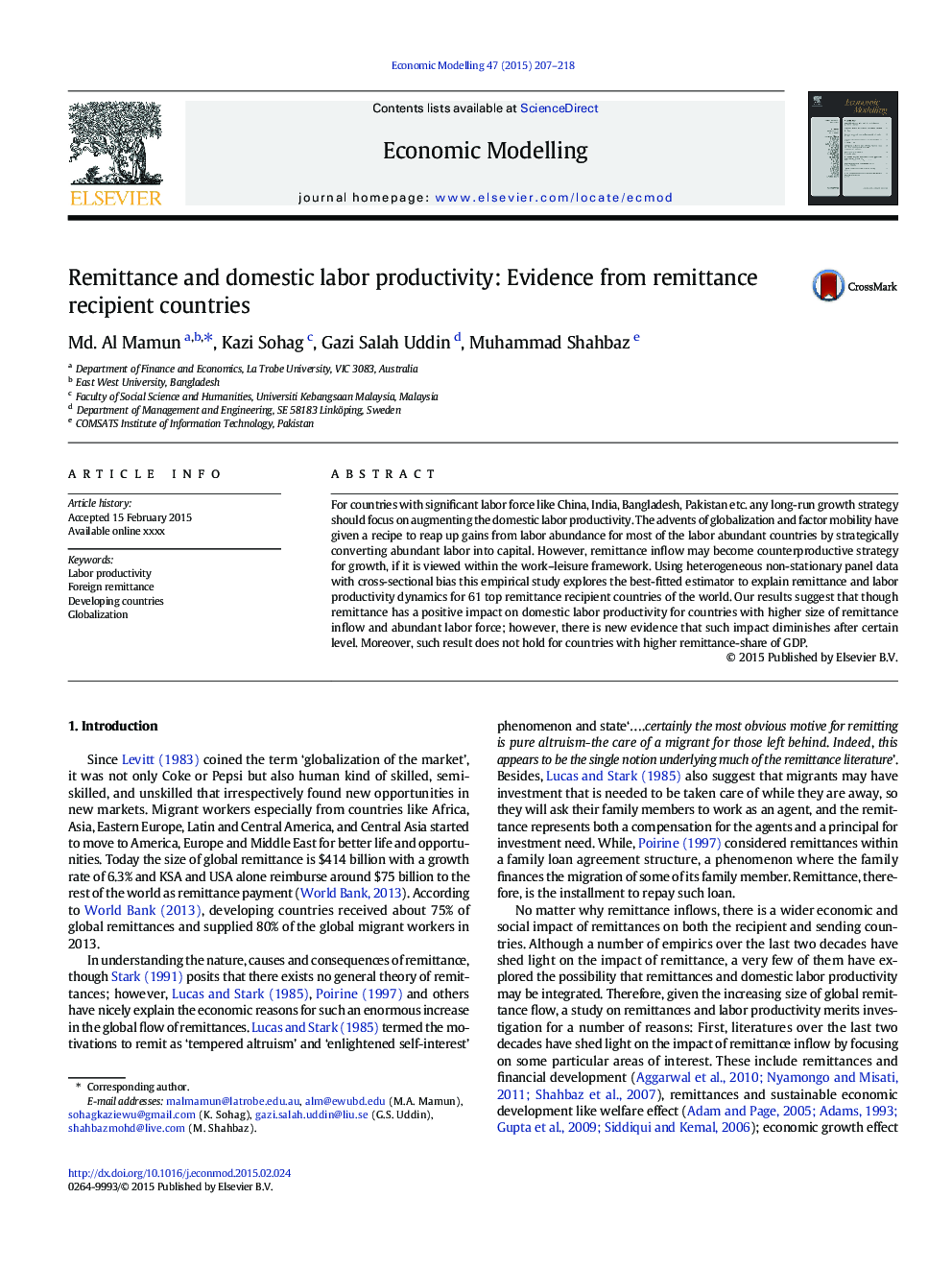| Article ID | Journal | Published Year | Pages | File Type |
|---|---|---|---|---|
| 5053913 | Economic Modelling | 2015 | 12 Pages |
Abstract
For countries with significant labor force like China, India, Bangladesh, Pakistan etc. any long-run growth strategy should focus on augmenting the domestic labor productivity. The advents of globalization and factor mobility have given a recipe to reap up gains from labor abundance for most of the labor abundant countries by strategically converting abundant labor into capital. However, remittance inflow may become counterproductive strategy for growth, if it is viewed within the work-leisure framework. Using heterogeneous non-stationary panel data with cross-sectional bias this empirical study explores the best-fitted estimator to explain remittance and labor productivity dynamics for 61 top remittance recipient countries of the world. Our results suggest that though remittance has a positive impact on domestic labor productivity for countries with higher size of remittance inflow and abundant labor force; however, there is new evidence that such impact diminishes after certain level. Moreover, such result does not hold for countries with higher remittance-share of GDP.
Related Topics
Social Sciences and Humanities
Economics, Econometrics and Finance
Economics and Econometrics
Authors
Md. Al Mamun, Kazi Sohag, Gazi Salah Uddin, Muhammad Shahbaz,
